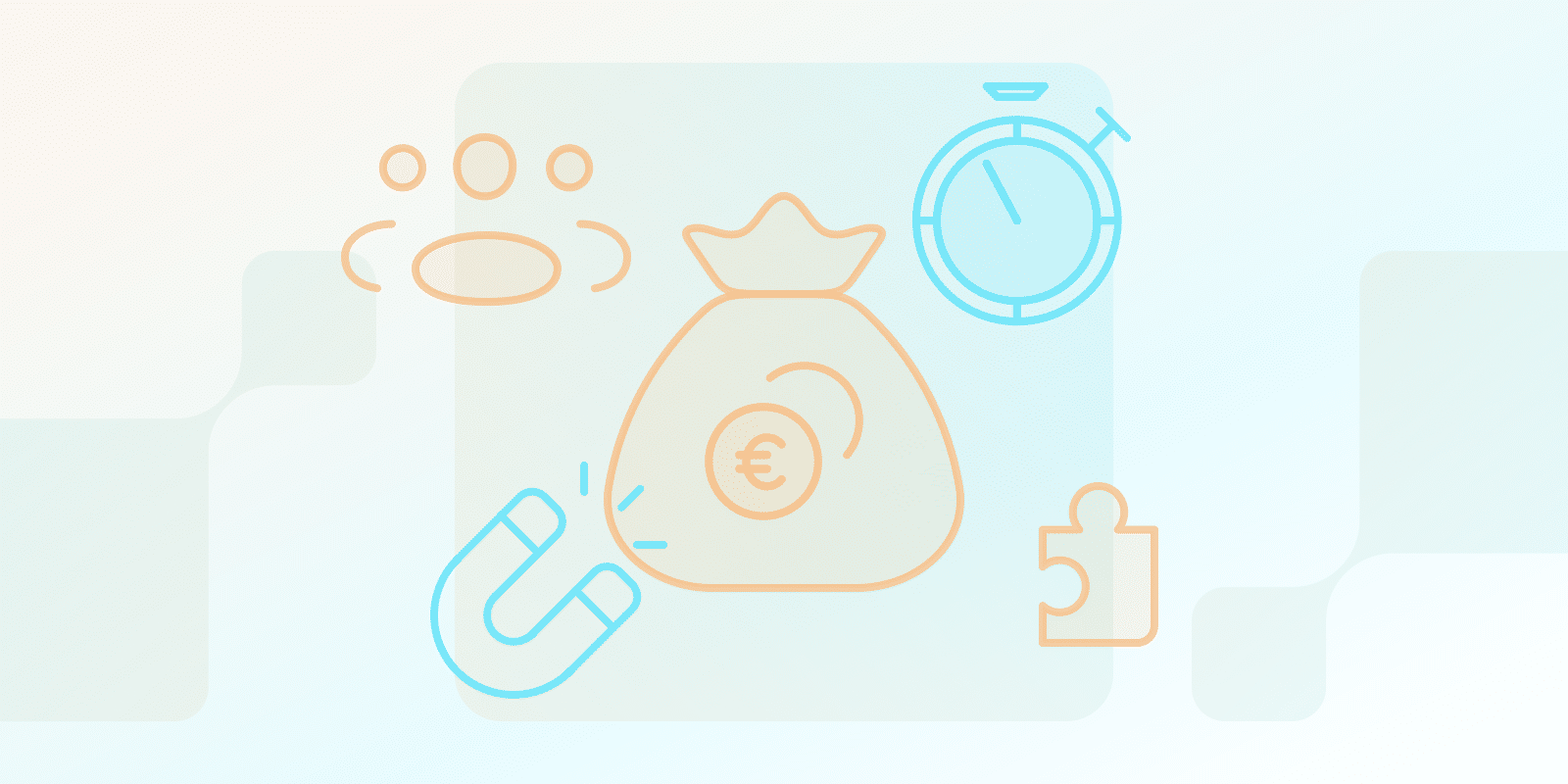SaaS-statistieken en -KPI's
Wat is Customer Acquisition Cost (CAC)?

Wat is Customer Acquisition Cost (CAC)?
Kosten voor klantenwerving (CAC) is de term die wordt gebruikt om de totale kosten te definiëren voor het werven van een nieuwe klant. Deze kosten omvatten reclame, verkooppromoties en elke andere maatregel die erop gericht is een potentiële lead om te zetten in een betalende klant.
U moet uw CAC kennen om uw marketinginspanningen te verfijnen en beschikbare middelen te beheren. De meest gebruikelijke benadering van CAC is afhankelijk van de boekhoudkundige stijl van een organisatie en de soorten kosten die in berekeningen zijn opgenomen.
Wat zijn de factoren die de kosten voor klantenwerving (CAC) beïnvloeden?
In alle sectoren en bedrijfsmodellen zijn er meerdere factoren die van invloed zijn op de kosten voor klantwerving (CAC). Dergelijke factoren zijn onder meer:
- complexiteit van producten en diensten
- Concurrentie
- SaaS-nalevingsregels
- de verhouding tussen CAC en LTV
In de e-commercebranche heeft CAC een breed bereik, afhankelijk van het product, het publiek en de marketingbenadering. Organisaties moeten de factoren begrijpen die CAC voor hun branche beïnvloeden om uitgaven aan marketing te stroomlijnen en marketingbenaderingen te analyseren, evenals Groeistrategieën.
Wat zijn de voordelen voor bedrijven bij het analyseren van CAC?
Door de kosten van klantenwerving te kennen, kunnen bedrijven weloverwogen beslissingen nemen over marketinginvesteringen, Klantwerving strategieën en bredere bedrijfsinitiatieven.
Houd rekening met de volgende punten als het gaat om CAC-voordelen:
- Bepaal kostenefficiënte communicatiemethoden en -kanalen voor marketingactiviteiten.
- Biedt begeleiding bij de toewijzing van fondsen en de selectie van geschikte marketinginvesteringen.
- Fungeert als basis voor het berekenen van de levenslange klantwaarde (LTV) en het rendement op investering (ROI).
Hoewel het verzamelen en analyseren van gegevens essentieel is, kunnen ze veeleisend zijn en aanzienlijke middelen vereisen.
CAC is onderhevig aan externe factoren zoals marktconcurrentie en de staat van de economie.
Hoe kan ik de kosten voor klantenwerving (CAC) verlagen en hoe beïnvloedt dit mijn bedrijfsstrategieën?
Het verlagen van de kosten voor klantenwerving (CAC) is een belangrijke factor bij zakelijke beslissingen, omdat het de winstgevendheid kan bevorderen en een efficiënte toewijzing van middelen kan aanmoedigen.
Dit komt omdat de meeste, zo niet alle, middelen die worden besteed aan marketing naar nieuwe klanten gemakkelijk kunnen worden beheerst door het doel te verkleinen van de algemene consumenten naar een gedefinieerde groep.
Het is essentieel om te richten op zeer specifieke consumenteneigenschappen, zodat er geen marketingkosten worden gemaakt voor de reeds gevestigde klanten.
Begrijp dat hoewel het van vitaal belang is om de CAC te verlagen, het nooit op zichzelf mag worden bekeken. Men moet ervoor zorgen dat de klanten die je krijgt de moeite en de toegewezen middelen waard zijn.
Wat zijn de trends en uitdagingen bij het berekenen en optimaliseren van CAC?
Zorgelijke gebieden die verband houden met CAC-berekening omvatten het bereiken van winstgevende klantsegmenten, het handhaven van een goede mix van kosteneffectieve kanalen voor klantenwerving en het ervoor zorgen dat de juiste prijs en boodschap worden aangeboden aan de doelmarkt.
Wat betreft trends moet de acquisitiekost worden verlaagd terwijl de LTV:CAC-ratio wordt verbeterd. De opkomst van e-bedrijven en de noodzaak voor SaaS-bedrijven om klantrelaties te ontwikkelen, hebben de focus van CAC vooral naar de CFO's verlegd.
De LTV: CAC-ratio van 3:1 is een praktische richtlijn voor de groei van SaaS-bedrijven, maar deze ratio kan variëren afhankelijk van de branche en specifieke bedrijfsmodel.
| Aspect | SaaS-bedrijven | E-commerce bedrijven |
|---|---|---|
| CAC-berekeningsuitdagingen | ||
| Belangrijkste complexiteitsfactoren | Naleving van regelgeving, productcomplexiteit | Marktvolatiliteit, productdiversiteit |
| Resource-intensiteit | Hoog (dataverzameling, analyse) | Matig (gevarieerde marketingkanalen) |
| Optimalisatiestrategieën | ||
| Doelgerichte aanpak | Specifieke klantsegmenten | Brede marktsegmentatie |
| Primair optimalisatiedoel | Verbeter de LTV:CAC-ratio (doel 3:1) | Verlaag de acquisitiekosten per klant |
| Belangrijkste prestatie-indicator | Customer Lifetime Value (LTV) | Kosten per acquisitie (CPA) |
| Strategische focus | ||
| Organisatorische nadruk | CFO-gedreven ontwikkeling van klantrelaties | Marketing- en verkoopefficiëntie |
| Groeibenadering | Duurzame, relatiegerichte groei | Groei gedreven door volume en conversie |
Conclusie
De kosten voor klantwerving (CAC) geven bedrijven inzicht waarmee ze weloverwogen beslissingen kunnen nemen over het efficiënt aantrekken van klanten. CAC helpt hen bij het kiezen van marketingbenaderingen, het verstandig toewijzen van middelen en het meten van het rendement op investeringen.
Houd er rekening mee dat het een dynamische metriek is die wordt beïnvloed door marktwedstrijd, economische omstandigheden en branchespecifieke factoren. Het wordt ook geassocieerd met toegenomen concurrentievermogen, aanhoudende groei en een groeiend klantenbestand. Resultaten kunnen variëren afhankelijk van specifieke omstandigheden.